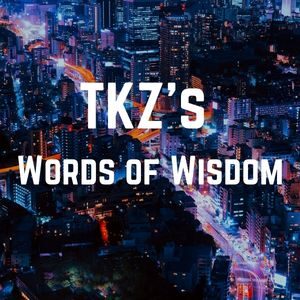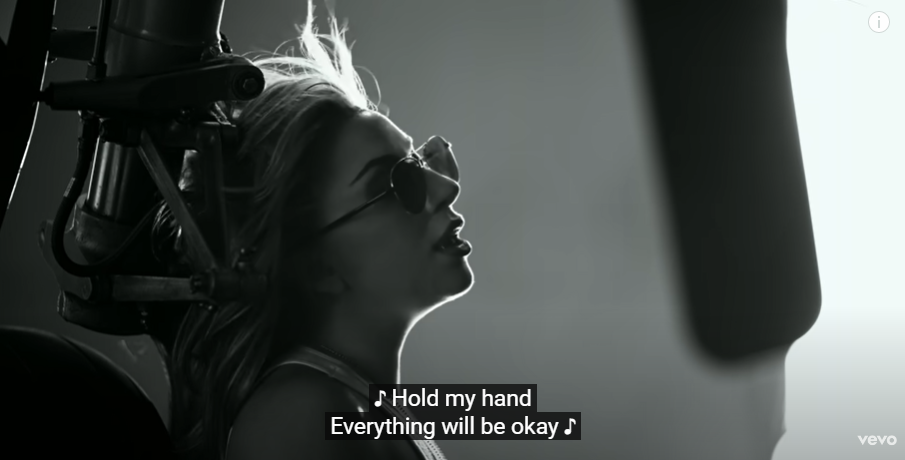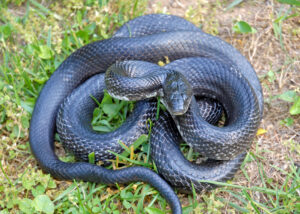 Zoosemiotics is the study of animal communication, and it’s played an important role in the development of ethology, sociobiology, and the study of animal cognition. Writers can also learn from zoosemiotics. Think characterization and scene enhancement.
Zoosemiotics is the study of animal communication, and it’s played an important role in the development of ethology, sociobiology, and the study of animal cognition. Writers can also learn from zoosemiotics. Think characterization and scene enhancement.
In the animal kingdom, the sender and receiver of communication may be part of the same species or from different species. Crows, for example, warn the chippies, squirrels, and numerous small birds when dangerous predators are in the area. They do this with a vocal alarm, and every animal pays attention. When crows are around good people and animals they’re comfortable with, they blink several times per minute and have a relaxed, roaming gaze. If a predator prowls or coasts into their domain, their unblinking, hard stare at the threat warns other wildlife in the area.
Warning Coloration
In species such as wasps that are capable of harming potential predators, they’re often brightly colored, and this modifies the behavior of the predator who either instinctively knows to be wary or has learned to use caution through past experiences. Some forms of mimicry fall in the same category. For example, hoverflies have similar coloring to wasps. Although they’re unable to sting, wasps avoid them.
Coloration changes in characters include reddening or flushed neck and/or face (anger or embarrassment) or the lack of color i.e., pale (fear, anxiety, or nervousness).
Behavioral Changes
Canines such as wolves and coyotes may adopt an aggressive posture, such as growling, head leveling, or baring teeth to warn a potential predator to stay back, that if they approach, the canine is ready and able to fight. Rattlesnakes use their telltale rattle—it means, if you come near me, I will strike. Certain amphibians with a bright colored belly and a back that blends into the environment, flash their belly when confronted by a potential threat, indicating they are poisonous in some way.
Behavioral changes in characters include a snarled lip, clenched fists, pitching forward, or lunging at the threat (anger), mouth dryness, licking lips, avoiding eye contact, clenched hands/arms, jerky steps, fidgeting, defensive posture (fear, anxiety, or nervousness), slumped shoulders, tears, flat speech (sadness), raised eyebrows, eyes widening, slacked jaw (surprise), open body language, smiling (happiness) etc.…
Stotting
An example of prey to predator communication is stotting, a highly noticeable form of running shown by some antelopes such as a Thomson’s gazelle. Stotting indicates the animal is healthy and fit, thus not worth pursuing.
Stotting behavior in characters: Think about the difference between jogging and running for your life. The feet may be sloppy or the character zigzags, trips, or falls (fear).
Predator to Prey
Some predators communicate to prey in ways that change their behavior. The deception makes them easier to catch. Take, for example, the angler fish. Fleshy growth protruding from its forehead dangles in front of its jaws. Smaller fish try to take the lure, thereby positioning themselves directly in front of the angler fish’s mouth.
Describing deceptiveness in characters would take an entire post, but you get the picture. 😉
Human & Animal Communication
We are all part of the Natural World. Various ways in which humans interpret the behavior of domestic animals and/or wildlife fit the definition of interspecific communication. Although dogs can use vocal communication, they mainly display nonverbal communication through the use of body language, such as tail carriage and motion, ear and eye position, body position and movement, and facial expressions. Recognizing the correct nonverbal cue will help decipher what the dog is telling us.
More character nonverbal cues include sweating, trembling, damp eyes, muscles tensing, crossed arms or the drawing in of limbs, the body recoiling (fear, anxiety, nervousness), sudden backward movement (surprise), relaxation of muscles (happiness), etc….
While observing a dog’s body language it’s crucial to observe the entire dog, as well as the situation or context. For example, a dog’s wagging tail does not always mean Fido’s happy. A tail in motion is often noticed first, but the rest of the dog is board-stiff, and the ears are back and the dog’s in a couched position, the full picture tells you Fido’s not happy with the situation.
5 Common Groups of Canine Signals
 Keep in mind, a dog could use more than one response at a time. Hence why it’s important to analyze the entire dog, not just one body cue (the same applies to characters).
Keep in mind, a dog could use more than one response at a time. Hence why it’s important to analyze the entire dog, not just one body cue (the same applies to characters).
Fido may start with a display of excitement, then decide the stimuli is a threat and switch to aggressive posturing, or send fear signals, or both.
As we review each group, notice the similarities to us (characters).
Fearful Communication
When a dog is frightened, he’s likely to react with his whole body. He may lick his lips, yawn, keep his mouth tightly closed, cower or lower his body, lower or tuck his tail, or flatten his ears. He may also tremble or shake, avoid eye contact, or lean back to avoid the frightening stimulus.
The body language may be a combination of several signals and/or may appear as a progression through these signals as the dog’s response intensifies. Sometimes, the complete absence of active signals can speak volumes. A dog that won’t eat food or treats, is avoiding people when they approach, or freezes when someone reaches for him—a “shut down” appearance—is demonstrating fear. Sadly, we often see this behavior in shelters if the dog doesn’t get adopted. Shelter dogs also may display high arousal or excitement.
Arousal Communication
The arousal in shelter dogs could be due to many factors, including age, confinement, lack of physical and/or mental outlets, and personality. An arousal/excitement response could indicate joy directed at a certain person, another dog, or toy. If the context is a favorable one, the dog should have soft, relaxed body and eyes and mouth, along with a wagging tail that jumps for attention. He may also play-bow—rear end in the air, front end lowered—to demonstrate excitement. Other cues are jumping, mounting, and mouthing. Mouthing should be soft (no teeth).
Arousal behaviors can also be directed at unfavorable stimuli, such as an unwanted human, animal, or situation. Arousal signals in this context may be coupled with fear signals, such as trembling or a low/tucked tail. Or the arousal signals are paired with aggression—barking, lunging, anxious pacing or spinning, or biting of leash, clothing, or the unfavorable stimuli. The dog’s fur can pilo-erect (hackle), his ears bent forward or at attention, his stance upward and erect. The tail is often up and wagging stiffly, and the eyes are wide-open and focused on the target. He could also bark, growl, and/or lunge.
Anxious Communication
If a dog becomes stressed, he may exhibit excessive panting, pacing, and lack of focus. Similar body language to a fearful dog, when in reality, he’s filled with anxiety. Which is why context is key. A dog that jumps at the kennel door as a person approaches is displaying arousal/excitement. Whereas a dog bounding off the side walls of the kennel displays anxious communication signals.
Aggressive Communication
Aggression is a normal and natural behavior in animals, triggered by a perceived threat. Aggressive vocalizations and body posturing are warning signals.
In dogs, we understand aggression through body language that includes stiffening or freezing, eyes wide with the whites visible (called whale eye), tense mouth or curled lips, wrinkled nose, bared teeth, barking, growling, and air snapping.
Relaxed Communication
We all love dogs in a relaxed position, like he doesn’t have a care in the world. Mouth relaxed, lips slightly parted. A smiling appearance. Head and ears relaxed in a neutral position, body loose, eyes soft. His tail may be swishing back and forth, or even wagging in a circular motion. My favorite is when a dog’s lying in the frog-leg position. Those froggy legs are hard to resist!
Over to you, TKZers! You may be using animal communication and not realize it, because many behaviors are similar to our own body language. If you’d like to give an example from your WIP, go for it. Otherwise, please include different animals and how they communicate.




 Emotion, Beginnings, and Anti-heroes
Emotion, Beginnings, and Anti-heroes The nice weather has finally hit New England. Yay!
The nice weather has finally hit New England. Yay!
 My name is Kimber. I am a Cavaston–a mix of Cavalier King Charles Spaniel and Boston Terrier. My new parents drove all the way up to Pennsylvania to pick me up on February 15. It was cold and I was scared.
My name is Kimber. I am a Cavaston–a mix of Cavalier King Charles Spaniel and Boston Terrier. My new parents drove all the way up to Pennsylvania to pick me up on February 15. It was cold and I was scared. I had to go to the doctor for a checkup during my first week at the apartment. The doctor was nice, but there’s not a lot of privacy. They stuck me with needles and squeezed me a lot, but they let me eat spray cheese out of a can while they did it, so I didn’t mind all that much.
I had to go to the doctor for a checkup during my first week at the apartment. The doctor was nice, but there’s not a lot of privacy. They stuck me with needles and squeezed me a lot, but they let me eat spray cheese out of a can while they did it, so I didn’t mind all that much. Not everybody recognizes the origins of my name. John tells me it’s the same as one of his favorite pistols. One day, when we were visiting the new house before we moved in and the heat wasn’t turned on yet, I got cold and climbed inside of his vest. After this picture was taken, John called me his quick-draw puppy.
Not everybody recognizes the origins of my name. John tells me it’s the same as one of his favorite pistols. One day, when we were visiting the new house before we moved in and the heat wasn’t turned on yet, I got cold and climbed inside of his vest. After this picture was taken, John called me his quick-draw puppy. These days, we’re all moved into the new house and the construction is over with–well, mostly. John complains that the master bedroom closets still aren’t finished. I like living in the country more than I liked living in the apartment. Out here, I get to pee and poo outside instead of on the little pads that I never really hit. (Apparently, you’re supposed to have your back legs on the pad, too. Who knew?)
These days, we’re all moved into the new house and the construction is over with–well, mostly. John complains that the master bedroom closets still aren’t finished. I like living in the country more than I liked living in the apartment. Out here, I get to pee and poo outside instead of on the little pads that I never really hit. (Apparently, you’re supposed to have your back legs on the pad, too. Who knew?) Country living can be scary. I was playing in the woods just a few days ago and I saw something that looked like it wanted to play with me, but not in a good way. It kept hissing and trying to bite me. I’m really fast, though. I barked and barked, and finally, John came out to see what was happening. The stranger hissed and tried to bite him, too. He got very stern and told me to go back into the house. A few minutes later, I heard a really loud noise. I haven’t seen the stranger since.
Country living can be scary. I was playing in the woods just a few days ago and I saw something that looked like it wanted to play with me, but not in a good way. It kept hissing and trying to bite me. I’m really fast, though. I barked and barked, and finally, John came out to see what was happening. The stranger hissed and tried to bite him, too. He got very stern and told me to go back into the house. A few minutes later, I heard a really loud noise. I haven’t seen the stranger since. I think John’s really happy that I’m around the house. All day long, he sits in a chair in front of a folding thing with buttons on it, but I’m tall enough now that I can jump right up onto the buttons and help him push them. He pretends not to like me doing that, but he always ends up playing with me. Maybe not the first time I jump up, or the second, but sooner or later, he gives in and plays. He said something about not being able to say no to my face.
I think John’s really happy that I’m around the house. All day long, he sits in a chair in front of a folding thing with buttons on it, but I’m tall enough now that I can jump right up onto the buttons and help him push them. He pretends not to like me doing that, but he always ends up playing with me. Maybe not the first time I jump up, or the second, but sooner or later, he gives in and plays. He said something about not being able to say no to my face.
 Zoosemiotics is the study of animal communication, and it’s played an important role in the development of ethology, sociobiology, and the study of animal cognition. Writers can also learn from zoosemiotics. Think characterization and scene enhancement.
Zoosemiotics is the study of animal communication, and it’s played an important role in the development of ethology, sociobiology, and the study of animal cognition. Writers can also learn from zoosemiotics. Think characterization and scene enhancement. Keep in mind, a dog could use more than one response at a time. Hence why it’s important to analyze the entire dog, not just one body cue (the same applies to characters).
Keep in mind, a dog could use more than one response at a time. Hence why it’s important to analyze the entire dog, not just one body cue (the same applies to characters). Brother Gilstrap’s recent
Brother Gilstrap’s recent